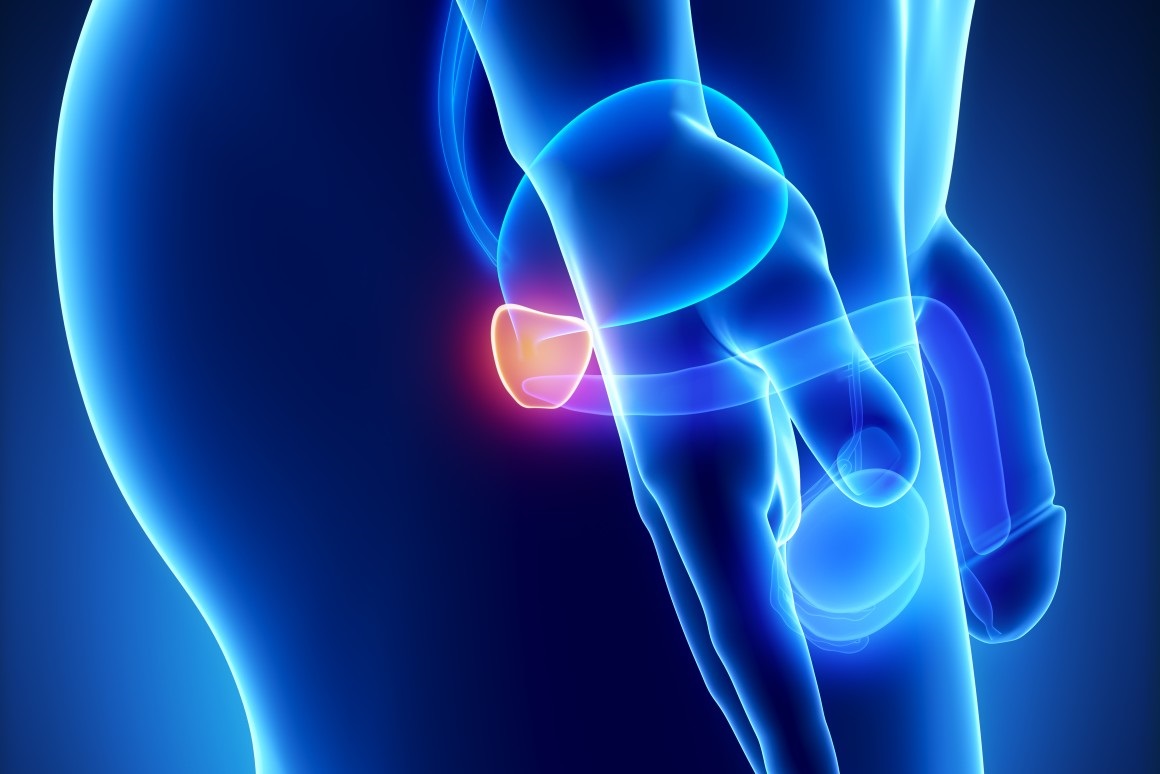The prostate is a walnut-shaped gland in males that sits underneath the bladder and surrounds the urethra. It grows in size as you get older. The prostate’s main function in the body is to help produce seminal fluid– that nourishes and carries sperm.
Prostate cancer develops when cells in the prostate gland start to grow uncontrollably. It is amongst the most common types of cancer in men. Typically, the prostate grows slowly and initially remains confined to the prostate gland. This does not cause any symptoms or affect the life-expectancy and many men are able to live without any treatment.
However, some types of prostate cancer are aggressive and can spread quickly to other parts. This requires proper treatment.
There are many types of treatment options available for prostate cancer. The doctor will discuss in details about your choices and help you decide the most suitable treatment. A multidisciplinary team of doctors including urologists, uro-oncologists, radiation therapists, medical oncologists, surgical oncologists and others are involved in treatment planning for a prostate cancer patient.
The treatment plan is designed on the basis of factors, such as
- The age, overall health status, and lifestyle of the patient
- Prostate cancer stage or how large the tumour is and whether it has spread to other body parts
- The patient’s personal opinion (as well as the doctor’s) on whether if they need to treat the cancer right away
- Potential side effects of a particular treatment
According to Centre for Disease Control, the common treatment methods for prostate cancer are –
Watchful waiting: This involves closely monitoring the prostate cancer. It is usually followed when the tumour is very small and slow-growing. The doctor may suggest waiting for symptoms to appear before initiating a treatment.
Active surveillance: In this, the doctor recommends regular medical examinations to keep a check on the growth and spread of tumour. It includes tests such as –
Prostate specific antigen (PSA): every 3-6 months
Digital rectal exam (DRE): at least once in a year
Prostate biopsies: within 6 to 12 months and then another biopsy at least every 2 to 5 years
The treatment is recommended only if the cancer grows or causes symptoms.
Surgery: This involves removal of the tumour and some surrounding healthy tissues during an operation. Prostatectomy is performed by surgical oncologists and uro-oncologists along with other specialists.
There are different types of surgeries for prostate cancer removal, including –
Radical prostatectomy – In this, the surgeon removes the entire prostate and the seminal vesicles. It may also involve the removal of lymph nodes in the pelvic area. The surgery has some risks of affecting the sexual function of the men. Nerve-sparing surgery may improve the chance of a man maintaining his sexual function after the surgery as it avoiding surgical damage to the nerves that enables an erection and orgasm to occur.
Robotic or laparoscopic prostatectomy: These are minimally invasive surgery techniques that provides the benefits of shorter recovery time, less post-surgery pain and discomfort. This a keyhole approach in which small incisions are made on the patient’s abdomen. The surgeon inserts a tiny camera and special instruments through these incisions and perform the operation. The robotic instruments are directed through surgeon’s console and the prostate gland as well as some surrounding healthy tissues are removed.
Robotic prostatectomy is a sophisticated surgical technique that allows the surgeons more precision and access to the surgeon. Generally, the patient experience less bleeding and pain after the robotic surgery. However, the risk of sexual and urinary side effects may remain similar to those of a radical (open) prostatectomy.
Prostate cancer treatment in India is highly advanced and is done using the latest technologies such as da Vinci robotic system for prostate surgery.
Radiation therapy: This involves the using of high-energy radiation to kill the cancer cells. A radiation oncologist will plan the schedule and sessions for delivery of radiation. It may be combined with surgery to eradicate the remaining cancer cells.
There are two types of radiation therapy—
External radiation therapy: It is the most common type of radiation therapy. In this, the machine that delivers radiation to the cancer cells is placed outside the body. According to the American Society for Radiation Oncology, the hypofractionated radiation therapy may be an option for some patients with an early-stage prostate cancer. This involves directing a higher daily dose of radiation over a shorter period rather than lower doses given over a long period.
Internal radiation therapy (brachytherapy): In this, radiation source is directly placed inside the prostate. Radioactive seeds or pellets can be surgically inserted into or near the tumour to destroy the cancer cells.
Intensity-modulated radiation therapy: It is a type of external-beam radiation therapy. This technique uses CT scans to produce a 3D images of the prostate and tumour before the treatment. The computer analyses this information to identify the size, shape, and location of the prostate cancer and determine the amount of radiation that will be needed to destroy it. Using IMRT, the therapist can direct high doses of radiation at the prostate without increasing the risk of damage to the nearby tissues and organs.
Chemotherapy: Special anti-cancer drugs are used to shrink and kill the cancer cells. These drugs can be given in the form of pills or as through the veins, or, sometimes both methods may be used.
Cryotherapy: In this method, a special metal probe is placed inside or near the prostate cancer to freeze and eventually kill the cancer cells.
Biological therapy or Immunotherapy: This therapy uses body’s immune system to help identify and fight cancer. It may also be used to control the side effects from other cancer treatment methods. A type of biological therapy, called sipuleucel-T (Provenge), is used to treat advanced, recurrent prostate cancer.
High-intensity focused ultrasound. This type of therapy uses high-energy sound waves (ultrasound) to kill the cancer cells.
Hormone therapy: The treatment blocks the hormone, testosterone that help the cancer grow. Stopping the production of testosterone may cause cancer cells to grow more slowly or die.

